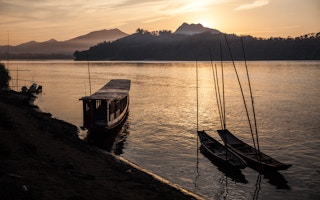The trafficking of illicit timber has hit the forested, tropical countries around the Mekong River Delta hard in recent years. Regulations and laws in places like the European Union and the United States, as well as from the Convention on International Trade in Endangered Species of Wild Fauna and Flora (CITES), have sought to decouple trade from the illegal harvest of timber. But the situation has created a complex and at times confusing working environment for customs, law enforcement and forestry officers.
In late October, more than 100 of these officials from half a dozen countries in and around the Lower Mekong region met online to bolster their skills in timber identification. The aim of the CITES-led workshop was to give them the tools to root out illegal shipments of timber and wood products into and out of their countries.
CITES lists some 100 tree species in the Lower Mekong region in a set of lists, or appendices, cataloging threatened and endangered plants and animals. On top of the density of at-risk species, officials struggle to maintain the capacity to ensure the legal trade of these species, said Thuok Nao, chairman of Cambodia’s CITES management authority, in an email to Mongabay.
“This region still has limited expertise in this matter,” said Nao, who attended the workshop.
The five-day training centered on the physical inspection of shipments. But with the swirl of constantly changing travel and safety restrictions as a result of the Covid-19 pandemic, CITES decided to keep the training virtual. It was the third such online workshop held this year.
“More and more valuable timber species have been added to the CITES Appendices in recent years, and their survival in the wild depends on the dedication of CITES, Customs and Enforcement authorities to prevent trafficking,” Ivonne Higuero, the CITES secretary-general, said in a statement.
Civil servants charged with ensuring the logs, processed boards and wood products that cross their borders come from legal sources face no shortage of challenges. Laws and sustainability guidelines require that timber not be harvested from slopes that are too steep to avoid erosion, or too close to riverbanks, where logging could disrupt sensitive ecosystems. Nor should logging disturb wildlife populations in many places.
Those regulations require a lot of on-the-ground monitoring, said Chen Hin Keong, senior forest adviser with U.K.-based wildlife trade NGO TRAFFIC, said in an interview.
At ports and checkpoints, however, “The majority of our challenge is on the legality of species,” Chen added.
TRAFFIC partners with CITES on these types of trainings, but was not involved in the October workshop. However, Chen said the goal remains the same: to give attendees the capacity to sort out whether a specific shipment of timber or wood products is legal. The physical tools can be quite simple, consisting of a sturdy knife, a 10X magnifying glass, and a database of species, as well as the basic knowledge to know how to access that information.
But, Chen said, it can take months of training to look at the cellular anatomy of a piece of wood and correctly identify the exact species with confidence. Instead of aiming for this level of detail, the trainings are intended to allow participants to figure out the source of the wood or the product, Chen said: “At least get them to the stage where they can figure out, ‘Oh, it may be [in] this group … or this particular genus or family’.”
Perhaps as important is understanding the context under which most illegality is likely to occur.
“That is why we actually try to train them to use the risk profiles that we have developed,” Chen said.
Rather than a singular focus on the specific tree, the goal is for the official to use waybills, the geographic source of the timber, and other clues to anticipate whether there’s a high chance of illegality with a specific shipment.
In many of the Lower Mekong countries, such as Vietnam, Thailand and Laos, customs offices have to oversee not one but several ports, and it would be impossible to inspect every shipment or even a majority of them. But if the signs suggest that illegal trafficking may be involved, agents can then use the training they’ve received from CITES and groups like TRAFFIC to probe further and potentially identify the trees in the shipment.
In addition to the knowhow to carry out physical inspections, Chen said TRAFFIC is working on applications that officials can use for identification, as well as providing digital databases.
“Everyone has a smartphone,” he said, making these tools easier to get into the hands of the people who can use them. Still, he added, “Technology cannot solve everything.”
So workshops also seek to help officials understand the role their governments must play in enforcing CITES restrictions.
Duangduen Sripotar, the CITES management authority for Thailand, attended the October workshop and said one of the challenges for her and her colleagues was getting all of the country’s various authorities on the same page.
Nao and Sripotar both said the recent workshop was helpful in understanding the documentation required for the international trade of timber.
Often, Sripotar said, different government agencies operate with their own set of parameters that don’t line up with the ones others are using.
“This circumstance is maybe a loophole” that allows illegal timber trafficking to occur, she said.
But proper training to understand the necessary regulations and tools to support them will “reduce the illegal trade,” Sripotar said.
This story was published with permission from Mongabay.com.








